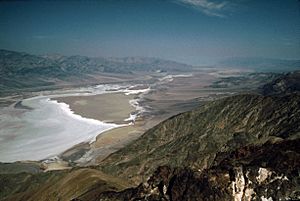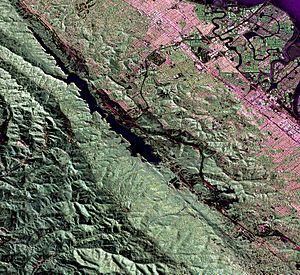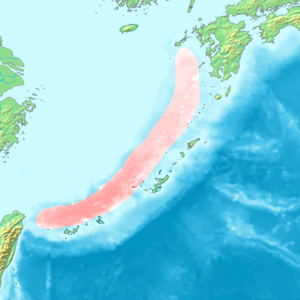Trough (geology) facts for kids
In geology, a trough is like a long, low area in the Earth's surface. Think of it as a dip or a valley that stretches out for a long distance. It's not as deep or steep as a trench, but it's still a noticeable hollow. Troughs can be narrow, like a long basin, or they can be a rift, which is where the Earth's crust is pulling apart.
What is a Geological Trough?
A geological trough is a long, sunken area on the Earth's surface. It's a type of depression, which means it's lower than the land around it. These troughs can be found on land or under the ocean. They are often much longer than they are wide.
Troughs in the Ocean
Many troughs are found under the ocean, and these are called oceanic troughs. A great example is the rifts you find along the mid-ocean ridges. Mid-ocean ridges are like underwater mountain ranges where new ocean floor is created. As the Earth's plates pull apart, a trough often forms right down the middle of these ridges.
One famous oceanic trough is the Cayman Trough. It's a very deep underwater valley in the Caribbean Sea. Another example is the Okinawa Trough, located near Japan. These deep areas are important for scientists studying how the Earth's crust moves and changes.
How Troughs Form
Troughs usually form because of the movement of the Earth's tectonic plates. When these huge pieces of the Earth's crust pull apart, stretch, or sink, they can create these long, low areas. For example, a rift trough forms when the crust stretches and thins, causing the land to drop down. This is similar to how the East African Rift Valley is forming on land.
Images for kids







